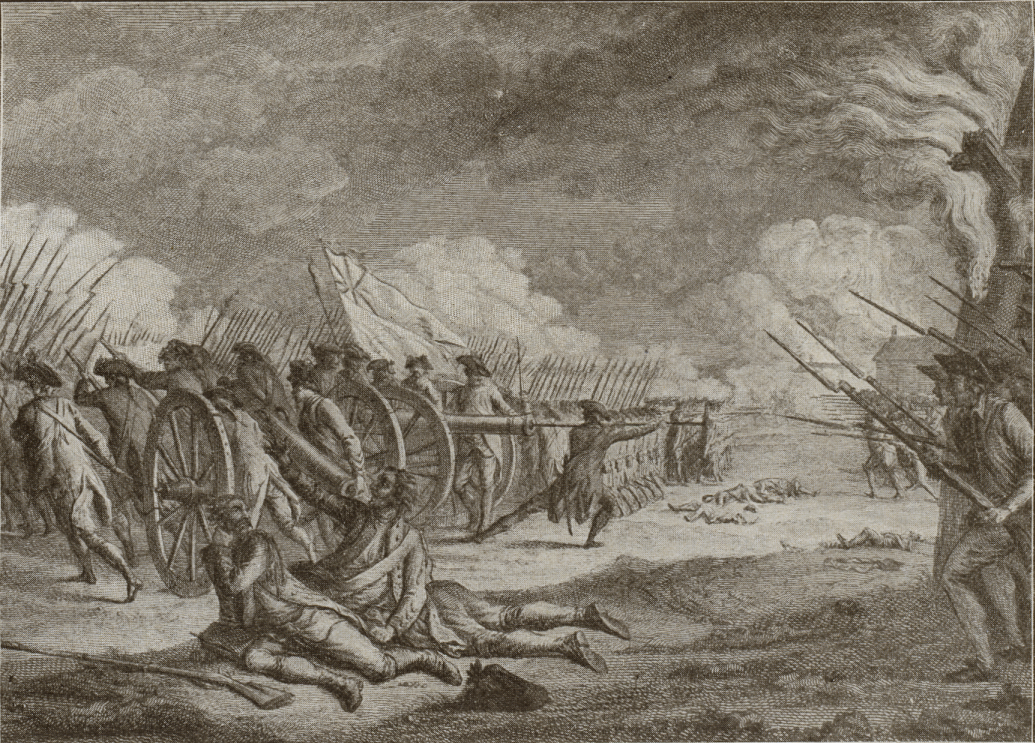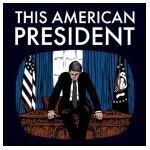The Battles of Lexington and Concord were of minor military significance but of world-historical importance in the modern era. They were the first military engagements of the Revolutionary War, marking the outbreak of armed conflict between Great Britain and its thirteen colonies on the North American mainland.
Fought on April 19, 1775, the battles of Lexington and Concord ruin British political strategy of ending colonial opposition to the Intolerable Acts and seizing weapons of rebels. Revolutionary leaders such as John Adams considered the battle to be a point of no return: “The Die was cast, the Rubicon crossed,” he said.
Outline of the Battles of Lexington and Concord
General Gage Clamps Down
-
- In September of 1774, General Thomas Gage ordered that the provincial store of gunpowder in Summerville (6 miles from Boston) to be seized. Much of it had already been moved elsewhere.
- The colonists lit signal fires and militia units were called up, while Loyalists fled to Boston for safety.
- Inside Boston, a Committee of Observation was formed, under the leadership of Paul Revere. The committee’s job was to monitor British troop movements.
- In Rhode Island and New Hampshire, militia units seized weapons and ammo.
- In February of 1775, Gage tried to seize more weapons and ammo at Salem. Militia units turned him back.
- Gage built defenses across Boston neck and asked the king for 20,000 additional troops. The king sent only 700 Royal Marines.
The First Continental Congress (1774)
-
- September: VA and Mass sent out a call for a Continental Congress to meet in Philadelphia. 12 of the 13 colonies sent representatives.
- The Congress endorsed the Suffolk Resolves, declared that Britain had no right to tax the colonies, and agreed to meet again in May 1775 to reassess the situation.
- The Congress also agreed to boycott British goods beginning in December 1774. Imports from Britain dropped 97% from 1774 to 1775, hurting the British economy.
- General Gage dissolved the Mass. legislature. They reconvened to the west, where he had little real authority.
- Gage began to hear rumors that the colonists were stockpiling weapons and gunpowder at the town of Concord. He began planning a mission to seize the weapons and gunpowder.
- Gage also heard that two of the key rebel leaders, Samuel Adams and John Hancock, were staying in Lexington, which was on the road to Concord.
The British Go on the March
-
- Gage put Lt. Colonel Francis Smith and Major John Pitcairn (a marine) in charge of a force of 800 light infantry and grenadiers. Smith and Pitcairn had not commanded these men before, and this would lead to confusion when fighting broke out.
- On April 18, a group of 20 men galloped out to secure road crossings and to prevent Patriot express riders from warning the militias at Lexington and Concord.
- Smith and Pitcairn’s force of 800 was ferried across the Charles River to Lechmere Point in Cambridge (although some sources say they actually landed on the Charlestown peninsula).
- Patriot spies warned the militias in the surrounding towns. The militiamen were called “minutemen,” because they had to be ready on a minute’s notice.
- Paul Revere had made arrangements for a signal to be placed in the Old North Church. (“One if by land, two if by sea”).
- In Concord, the residents began moving the military supplies out of town.
- April 19: Two express riders, Paul Revere, and William Dawes, galloped out of Boston and headed to Lexington and Concord to warn the militias there. At Lexington, they were joined by a third rider, Samuel Prescott.
- Revere and Dawes reached Lexington, where they roused Adams and Hancock, who fled, and the Lexington militia.
- Between Lexington and Concord, Revere was caught. Dawes turned back to Lexington, but Prescott made it to Concord to deliver the warning.
- As the regulars marched, warning shots and bells were heard all along the way. Militiamen turned out everywhere.
Lexington
-
-
- The British force marched toward Lexington. They reached the outskirts of the town around 4:30 AM.
- An advance unit of the British force arrived at the town’s common area (Lexington Green), where about 60-70 armed militiamen were waiting on them. The militia were led by Captain John Parker, who told them “Stand your ground! Don’t fire unless fired upon, but if they want to have a war, let it begin here.”
- Major Pitcairn cried “Throw down your arms, you rebels! Disperse, damn you, disperse!”
- The minutemen turned to leave but kept their arms. Pitcairn shouted “Damn you! Why don’t you lay down your arms?” Another officer shouted “Damn them! We will have them!”
- One of the British soldiers then fired without orders or had an accidental discharge. The British then all opened fire, killing 8 and wounding 10. The remaining rebels scattered. No British were killed and only one was wounded.
- Colonel Smith then arrived, reformed the troops, and marched them to Concord. As they marched, they heard alarm guns going off to summon more militiamen.
-
Concord
-
- By daybreak, the British force had reached Concord. The militia there retreated northward across the North Bridge to higher ground.
- Colonel Smith sent 7 companies of light infantry through the town and across the North Bridge, which spanned the Concord River, to form a protective line, while the grenadiers searched local houses for military supplies. They only found three wooden cannon, which they burned (along with the town’s liberty pole).
- Another two companies of regulars searched a farmhouse west of town, but found nothing.
- Meanwhile, several companies of militiamen (about 500 men) gathered on Punkatasset Hill. They were commanded by Colonel James Barrett. The British paid little attention to them.
- The militiamen marched to a ridge 300 west of the North Bridge and deployed them in battle formation.
- One lieutenant, Joseph Hosmer, saw the smoke from the burning artillery pieces and thought it was coming from burning buildings in the town. He said “I often heard it said that the British have boasted that they could march through our country, laying waste to our hamlets and villages and we would not oppose them, and I begin to think it is true. Will you let them burn the town down?”
- Hosmer marched the American force to the North Bridge. When they were 50 yards away, they opened fire. They wounded more than a dozen British soldiers.
- The British returned fire, and two militiamen were killed and one wounded. The British broke and ran.
- Smith rallied the troops and had them retreat to Concord (he knew they were outnumbered). Then he ordered them to return to Boston.
The Retreat
-
- On the way back, all along the road, militiamen harassed or ambushed the British column. They fired from behind trees, rocks, buildings and fences.
- The British were exhausted, disorganized, and running out of ammunition. They did not take prisoners, but killed all militiamen they found (including the wounded). Some looted houses and killed civilians.
- Gage sent a force of about 1000 men under Brig. General Lord Percy to rescue the retreating redcoats and to escort them to Boston. They had two cannon with them.
- The British arrived back on Charlestown peninsula around 7 PM.
- Altogether, 73 British soldiers were killed, 174 were wounded, and 53 were missing, adding up to 300 total casualties (20% of the original force).
- The American militia lost 50 dead and 39 wounded and 5 missing (94 total casualties).
Aftermath
-
- Lord Percy wrote “For my part, I have never believed, I confess, that they would have attacked the king’s troops or have had the perseverance I found in them yesterday. Whoever looks on them as an irregular mob will find himself very much mistaken.”
- Word of the fight spread rapidly. Paul Revere and other express riders carried the news all over the colonies.
- About 15,000 militiamen came to the Boston area and deployed around the city. General Gage and the British troops in Boston were now under siege.
- On May 26, Gage received reinforcements, including 3 major generals: William Howe, John Burgoyne, and Henry Clinton. Each of them would love to have replaced Gage. Gage had only 6000 soldiers in Boston to hold off the 15,000 militiamen around the city.
- The British were now faced with the problem of “how to subdue not just another army but a population in rebellion” (Robert Middlekauff, The Glorious Cause, 279).
- The battles become known as “The Shot Heard Round the World.”
This article is part of our larger selection of posts about Colonial America. To learn more, click here for our comprehensive guide to Colonial America.
This article is also part of our larger selection of posts about American History. To learn more, click here for our comprehensive guide to American History.
This article is also part of our larger selection of posts about the Revolutionary War. To learn more, click here for our comprehensive guide to Revolutionary War.
Additional Resources About Revolution and Colonies
Cite This Article
"Battles of Lexington and Concord" History on the Net© 2000-2024, Salem Media.
April 19, 2024 <https://www.historyonthenet.com/revolutionary-war-lexington-and-concord>
More Citation Information.







